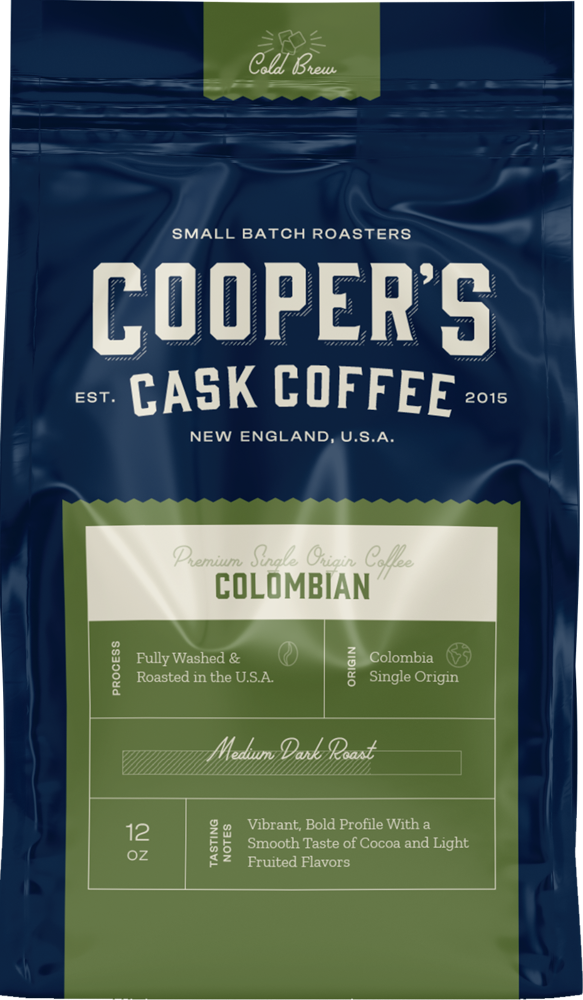Coffee is one of the most popular and beloved beverages in the world, and South America is the largest producer and exporter of coffee. But how did coffee get to South America in the first place? And how did it become such a vital part of the culture and economy of the region?
In this post, I will explore the history of coffee in South America, from its origins in Africa and Asia to its introduction by European colonists, to its spread and development across the continent.
I will also share some of the unique and flavorful coffee varieties that South America has to offer, and some of the challenges and opportunities that the coffee industry faces in the region.
Please note, some of the links are affiliate links from Amazon or other partners. Meaning, if you follow the links and buy a product I get a small commission. This does however not add any cost to you.
In this blog post we will look at the following:
The origins of coffee
Before we dive into the history of how did coffee get to South America, let’s take a look at the coffee history in general. Coffee is derived from the seeds of the coffee plant, which belongs to the genus Coffea.
There are over 120 species of coffee plants(!), but the most commercially important ones are Coffea arabica and Coffea canephora, also known as robusta. I have another post on the different Arabica types coffee beans here.

The coffee plant is native to the tropical and subtropical regions of Africa and Asia, where it grows in the wild or in cultivated gardens.
The earliest evidence of coffee consumption dates back to the 15th century, in the Sufi monasteries of Yemen, where coffee was brewed as a drink to aid in religious rituals and meditation.
From there, coffee spread to other parts of the Middle East, such as Egypt, Turkey, and Persia, where it became a popular social and cultural beverage.
Coffee also reached Europe through trade and travel, where it was initially met with suspicion and resistance by some religious authorities, who considered it a dangerous and intoxicating substance.
However, coffee soon gained popularity and acceptance, especially after Pope Clement VIII allegedly tasted and blessed it in 1600.
Feel free to pin the image if you like it!
Coffee houses began to emerge in major European cities, such as Venice, London, Paris, and Amsterdam, where coffee was served as a stimulating and fashionable drink, and where people gathered to exchange ideas, news, and gossip.
Read, Stay away from these European coffee brands.
The introduction of coffee to South America
The first coffee seeds to reach South America were brought by European colonists, who saw the potential of coffee as a profitable and desirable crop. The first recorded instance of coffee cultivation in South America was in the early 18th century, in the Dutch colony of Suriname, where coffee seeds were imported from Java, Indonesia.
From Suriname, coffee seeds were smuggled by the French to their neighboring colony of French Guiana, where they were planted in the coastal town of Cayenne.
The most significant event in the history of coffee in South America, however, was the introduction of coffee to Brazil in 1727. According to legend, a Brazilian officer named Francisco de Melo Palheta was sent to French Guiana on a diplomatic mission, where he seduced the wife of the governor, who gave him a bouquet of flowers containing coffee seeds as a farewell gift. Palheta then brought the seeds back to Brazil, where he planted them in the state of Pará, near the Amazon river.
From Pará, coffee cultivation spread to other regions of Brazil, such as Bahia, Rio de Janeiro, São Paulo, and Minas Gerais, where the climate, soil, and altitude were ideal for growing coffee. Coffee soon became the main export of Brazil, and the country dominated the world coffee market for over a century. Brazil is still the world’s largest producer and exporter of coffee, accounting for about a third of the global coffee production.
Coffee also reached other countries in South America, such as Colombia, Peru, Venezuela, Ecuador, Bolivia, and Argentina, through various routes and methods.
Some of these countries, such as Colombia and Peru, developed their own distinctive and high-quality coffee varieties, which are sought after by coffee lovers around the world.
The development of coffee in South America
The history of coffee in South America is not only a history of cultivation and trade, but also a history of culture and society. Coffee has played a significant role in the economic, political, and social development of the region, as well as in the formation of its identity and diversity.
Coffee has been a source of wealth and prosperity for many South American countries, especially Brazil and Colombia, where coffee has been the main export and the backbone of the economy for decades.
Coffee has also been a catalyst for innovation and modernization, as coffee growers and exporters have invested in infrastructure, technology, and research to improve the quality and efficiency of their coffee production.
A factor of conflict and violence
Coffee has also been a factor of conflict and violence, as coffee has been linked to issues such as slavery, inequality, land disputes, labor rights, and environmental degradation.
Coffee has also been a target and a resource for armed groups, such as guerrillas, paramilitaries, and drug traffickers, who have used coffee as a means of financing, controlling, or disrupting the coffee industry.
Coffee has also been a symbol and a expression of culture and identity, as coffee has been integrated into the daily life and rituals of the people of South America. Coffee has also been a vehicle for diversity and creativity, as coffee has inspired and influenced the art, literature, music, and cuisine of the region.
The varieties of coffee in South America
South America is home to some of the most diverse and flavorful coffee varieties in the world, which are influenced by the climate, soil, and processing methods of each country.

Colombia Cold Brew Coffee – Dark & Bold
Here are some of the most notable and popular coffee varieties from South America:
- Brazil: Brazil produces a wide range of coffee varieties, from the mild and nutty Santos, to the sweet and fruity Bourbon, to the rich and chocolaty Cerrado.
Brazil is also known for its natural and pulped natural processing methods, which give the coffee a low acidity and a smooth body.
Here is a coffee mix from Brazil and Colombia as found on Amazon. - Colombia: Colombia is famous for its high-quality arabica coffee, which is grown in the Andes mountains, where the altitude, temperature, and rainfall create ideal conditions for coffee cultivation.
Colombian coffee is characterized by its balanced and complex flavor, with notes of citrus, caramel, and nuts. Colombia is also known for its regional coffee varieties, such as the floral and fruity Huila, the bright and acidic Nariño, and the smooth and sweet Medellín. - Peru: Peru is one of the largest producers of organic and fair trade coffee, which is grown by small farmers in the highlands of the country. Peruvian coffee is typically mild and sweet, with hints of chocolate, vanilla, and spice.
Peru is also known for its specialty coffee varieties, such as the aromatic and delicate Chanchamayo, the spicy and nutty Urubamba, and the exotic and rare Geisha.
Feel free to pin the image if you like it!
- Venezuela: Venezuela produces a small but exquisite amount of coffee, which is grown in the northern and western regions of the country. Venezuelan coffee is renowned for its full body and rich flavor, with notes of honey, cocoa, and nuts.
Venezuela is also known for its unique coffee varieties, such as the smooth and creamy Maracaibo, the intense and robust Caracas, and the rare and delicate Táchira.
The challenges and opportunities of the coffee industry in South America
The coffee industry in South America faces many challenges and opportunities in the present and the future, as it adapts to the changing demands and conditions of the global coffee market. Some of the main challenges and opportunities are:
- Climate change: Climate change poses a serious threat to the coffee industry in South America, as it affects the temperature, rainfall, and pest patterns of the region, which can reduce the yield and quality of the coffee crops.
However, climate change also offers an opportunity for the coffee industry to adopt more sustainable and resilient practices, such as diversifying the coffee varieties, improving the irrigation and shade systems, and reducing the carbon footprint of the coffee production. - Competition: Competition is a constant challenge for the coffee industry in South America, as it faces the pressure of other coffee producing regions, such as Africa and Asia, which offer lower prices and higher volumes of coffee.
However, competition also offers an opportunity for the coffee industry to differentiate and innovate its coffee products, such as developing more specialty and niche coffee varieties, enhancing the traceability and transparency of the coffee supply chain, and creating more value-added and branded coffee products. - Consumption: Consumption is a key challenge and opportunity for the coffee industry in South America, as it reflects the preferences and trends of the coffee consumers around the world. On one hand, the coffee industry faces the challenge of meeting the increasing demand and expectations of the coffee consumers, who seek more quality, variety, and convenience in their coffee choices.
On the other hand, the coffee industry has the opportunity to expand and diversify its coffee markets, both domestically and internationally, by promoting and educating the coffee culture, by creating and participating in coffee events and festivals, and by establishing and strengthening the coffee relationships and networks.
Conclusion – How did coffee get to South America
Coffee is more than just a drink, it is a history, a culture, a passion, and a way of life. Ex. check your coffee personality in my coffee personality quiz. South America is more than just a region, it is a diversity, a richness, a beauty, and a wonder. The history of coffee in South America is a fascinating and complex story, full of achievements and challenges, of conflicts and opportunities, of traditions and innovations.
In this post, I have tried to give you an overview of how did coffee get to South America, and how it developed and evolved in the region.
I have also tried to introduce you to some of the unique and flavorful coffee varieties that South America has to offer, and some of the challenges and opportunities that the coffee industry faces in the region.
I hope you enjoyed this post, and I hope you learned something new about coffee and South America. If you did, please share this post with your friends, family, and fellow coffee lovers. And don’t forget to subscribe to my coffee blog, for more coffee-related content.
Thank you for reading, and until next time, keep brewing and keep loving coffee!
FAQ
What does coffee from South America taste like?
Coffee from South America is often described as balanced, smooth, and rich, with notes of cocoa, nuts, and caramel. However, there is a lot of diversity and complexity in the coffee varieties from different countries and regions in South America. For example, Brazilian coffee tends to be nutty and chocolatey, Colombian coffee tends to be fruity and floral, and Peruvian coffee tends to be sweet and spicy
Why does South America produce so much coffee?
South America produces so much coffee because it has the ideal climate, soil, and altitude for growing coffee plants. The tropical and subtropical regions of South America offer warm temperatures, abundant rainfall, and fertile soils that are suitable for both arabica and robusta coffee varieties. The Andes mountains also provide high altitudes that enhance the flavor and quality of the coffee beans
How did coffee change Latin America?
Coffee changed Latin America in many ways, both positive and negative. Coffee was a source of wealth and prosperity for many countries, especially Brazil and Colombia, where coffee became the main export and the backbone of the economy. Coffee also stimulated innovation and modernization, as coffee growers and exporters invested in infrastructure, technology, and research to improve their coffee production
However, coffee also brought conflict and violence, as coffee was linked to issues such as slavery, inequality, land disputes, labor rights, and environmental degradation. Coffee also became a target and a resource for armed groups, such as guerrillas, paramilitaries, and drug traffickers, who used coffee to finance, control, or disrupt the coffee industry
Coffee also shaped the culture and identity of Latin America, as coffee became integrated into the daily life and rituals of the people. Coffee also inspired and influenced the art, literature, music, and cuisine of the region
How was coffee used before the Columbian exchange?
Coffee was used before the Columbian exchange mainly as a stimulant and a social beverage in Africa and Asia. Coffee is believed to have originated in Ethiopia, where it was consumed by chewing the leaves or berries of the coffee plant, or by making infusions. Coffee then spread to the Arabian Peninsula, where it became a part of the culture and religion of the Muslims. Coffee was brewed as a drink to aid in prayers, meditation, and learning. Coffee also reached Turkey, Egypt, and Persia, where it became a popular social and cultural beverage, and where coffee houses emerged as places to gather and exchange ideas, news, and gossip
How did coffee arrive to Columbia?
Coffee arrived to Colombia in the early 18th century, thanks to a Portuguese officer named Francisco de Melo Palheta, who brought coffee seeds from French Guiana to Brazil. Palheta then smuggled some of the seeds to Colombia, where he planted them in the state of Pará, near the Amazon river. From there, coffee cultivation spread to other regions of Colombia, such as Bahia, Rio de Janeiro, São Paulo, and Minas Gerais, where the climate, soil, and altitude were ideal for growing coffee. Coffee soon became the main export of Colombia, and the country dominated the world coffee market for over a century



